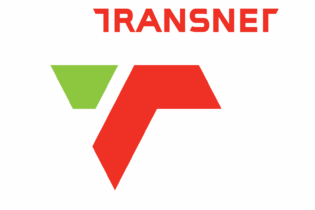Revelations that the country’s road network is over 40 years old yet the lifespan of a road is 20 years means almost the entire road network now requires rehabilitation, notes Tinashe Madava.
Many times, the Zimbabwean public has compared the country’s roads today to what was inherited at independence in 1980. The results have not always been flattering, but rather a huge disappointment.
Some analysts have said that infrastructure development after independence was not prioritised as much as social services such as education and health.
Rightly or wrongly, the relatively good road network the country had inherited was viewed as something that could be modified in later years.
This was despite the fact that as far back as the 1960s, the architects of African integration agreed that building infrastructure was vital to lubricate the wheels of intra-African trade and distribute its benefits regionally.
At the time, some of the continent’s leaders embarked on ambitious projects such as the trans-African highways – segments of which would eventually stretch from Cairo to Dakar, Tripoli to Windhoek and Lagos to Mombasa. These would provide access to the sea to 15 landlocked countries and improve regional links.
Consequently, the Southern African Development Community (SADC) member states made agreements to build highways linking their countries in order to improve trade; such as the trans-Kalahari highway linking South Africa, Botswana and Namibia.
Zimbabwe is a signatory of the SADC Protocol on Transport, Communications and Meteorology of 1996. This agreement commits SADC states to the reforms of road sector institutions, in particular the separation of responsibilities for funding, implementation, and the commercialisation of road sector activities.
The Zimbabwe Road Sector Reform and Development Process, which started in the mid-1990s in response to the signing of the SADC Protocol, resulted in the promulgation of a new Road Act in 2001. The purpose of the Act was to create the Zimbabwe National Road Administration (ZINARA) and the Road Fund.
Yet since the creation of ZINARA, limited progress has been made on further institutional reforms. An example is the transformation of the Department of Roads into an auto-nomous State Highway Authority which is still under discussion.
On the other hand, rural travel and transport issues in Zimbabwe have enormous social and economic implications as in other Sub Saharan African countries. This is due to the predominance of the rural population and also the relationship that exists between delivery of social services and economic activities.
For many rural people, the majority of travel is undertaken on paths and tracks which give access to basic needs such as water, firewood, grain processing, education and health.
Also, many urban dwellers have rural homes, which they like to frequent especially during holidays. Besides, a reliable road access to these rural areas would surely lead to the improvement of such places’ economic standing.
So, with the coming of ZINARA and the Road Fund, the country’s road network which includes all roads: highways, main or national roads, secondary or regional roads, and other urban and rural roads; was going to have a major facelift. Or was it?
According to the International Forum for Rural Transport and Devel-opment (IFRTD) the public road network in Zimbabwe comp-rises about 88 300 kilometres.
“Of this about 15 000km is paved. Only 24 percent of the network is currently estimated to be in ‘good’ condition, 40 percent is estimated to be in ‘poor’ condition and the remaining 36 percent is in fair condition. The condition of the network has deteriorated significantly since 1995. Most of this deterioration has occurred on urban roads, and on the unpaved rural road network,” says the IFRTD on their website.
Other estimates put the country’s roads at 18 338km of state roads, 5 290km of urban roads and 54 240km of rural roads, which translate to a total road network of 77 868km.
An official with the Infra-structure Development Bank of Zimbabwe resource mobilisation division last year revealed that 40 percent of the country’s road network was now classified as poor hence the country needed about US$10 billion to rehabilitate its road network.
With the money trickling in from the busy highways via the tollgates mounted across the country, many expected the long stalled dualisation of the Harare-Bulawayo, Harare-Beitbridge and Harare-Mutare highways to finally be completed within the shortest possible timeframe.
ZINARA is also responsible for the registration of motor vehicles in the country, an exercise which local authorities that have previously been entrusted with the responsibility say provides substantial revenue. But, no sooner had the Road Fund money started to be distributed to the different regions did the matter become politicised. Finger pointing became the order of the day as allegations of favouritism in allocating funds surfaced. ZINARA spokesperson, Augustine Moyo, has previously boasted that only his organisation could determine the amount of money allocated to each local authority. “Our revenue streams are limited. The money that is accruing in the Road Fund is not enough to meet demand. Last year we realised revenue of US$80 million and it was distributed among all local authorities,” said Moyo early this year after being quizzed about inadequate allocations to local authorities. Yet last year ZINARA was allegedly prejudiced of up to US$15 million in potential revenue through rampant printing of counterfeit motor vehicle discs. Also, in a report on the state of parastatals released early this year, Comptroller and Auditor-General Mildred Chiri revealed that ZINARA exceeded its expenditure by 5,5 percent while three vehicles, a Toyota Prado used by the former chief executive, a Mazda B2500 double cab and a Toyota Corolla were not accounted for. According to the Roads Act Section15 (d) of the Roads Act Chapter 13:18, ZINARA should use 2,5 percent of the total collections to the Road Fund for administration expenses. Chiri noted that non-compliance with Statutory provisions without prior written authority from the Minister of Transport, Communications and Infrastructural Deve-lopment might result in the entity failing to fulfill its set mandate in accordance with the Act. The report also noted that a set of leather sofas bought by ZINARA in 2007 was not accounted for during the time of the audit. About US$10 000 used by chief executive officer Frank Chitukutuku during a trip could also not be accounted for. It was also noted that ZINARA lacked a vibrant internal audit system to audit agents who collected money on its behalf such as Zimpost, the Vehicle Inspection Department and the Zimbabwe Revenue Authority among others. Yet, the auditor general said, roads which have exceeded their intended design life include Harare-Beitbridge, Harare-Chirundu, Harare-Plumtree, Harare-Mutare, Harare-Bindura, Harare-Nyamapanda, Gweru-Chi-vhu, Gweru-Zvishavane, Masvingo-Mutare, Masvingo-Bulawayo, Bulawayo-Beitbridge and Bulawayo-Victoria Falls roads. She estimated the cost of new road construction of the mentioned roads at about US$1,8 billion. She pointed out tollgate collections would be insufficient for construction or periodic and routine road maintenance, and recommended that resources be availed from central government for road rehabilitation to augment the toll funds, and that ZINARA gets into joint partnerships with private financiers. Revelations that the country’s road network is over 40 years old yet the lifespan of a road is 20 years means almost the entire road network now requires rehabilitation and not only the routine maintenance currently being done by most local authorities and the District Development Fund. Source: allafrica.com






